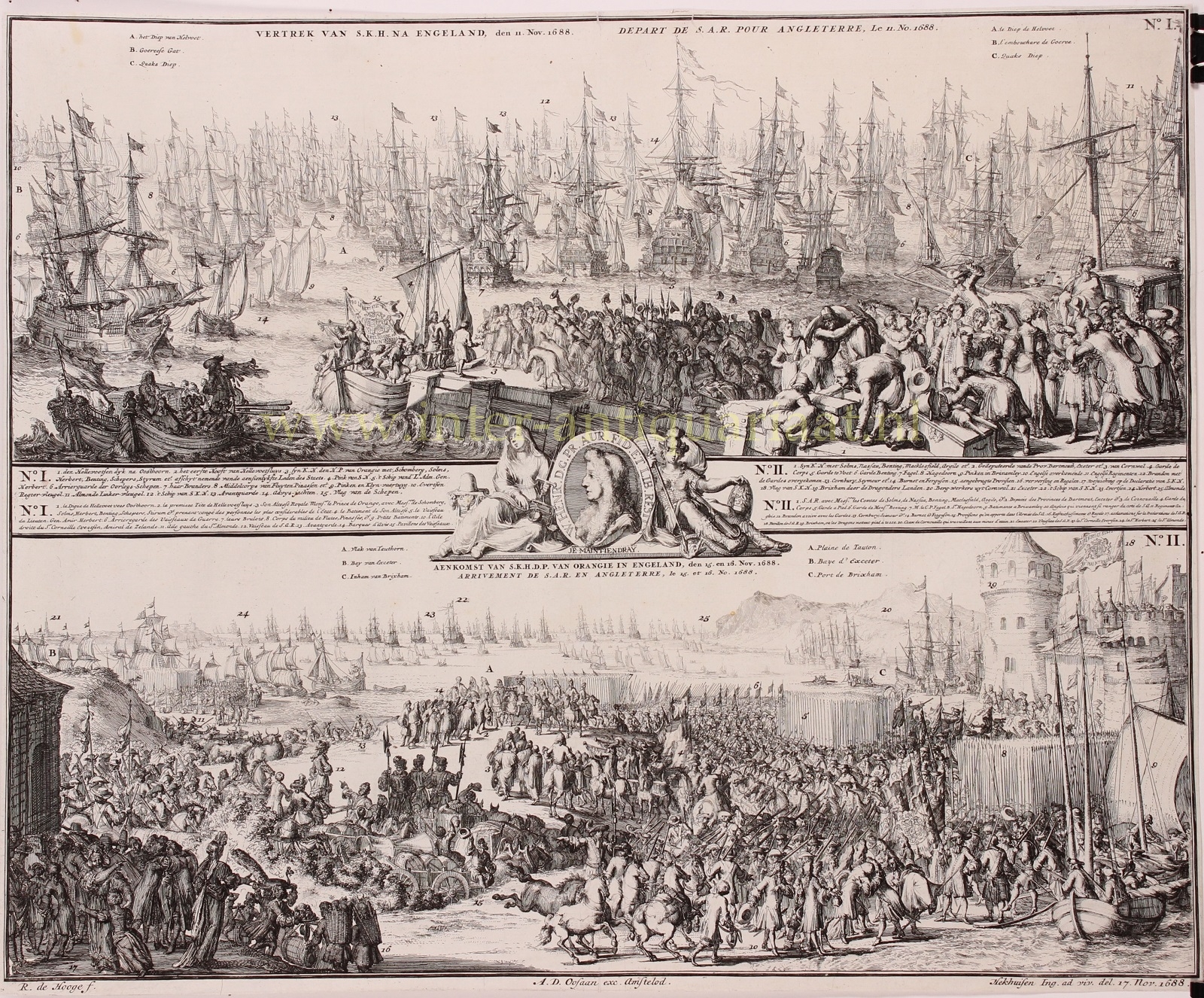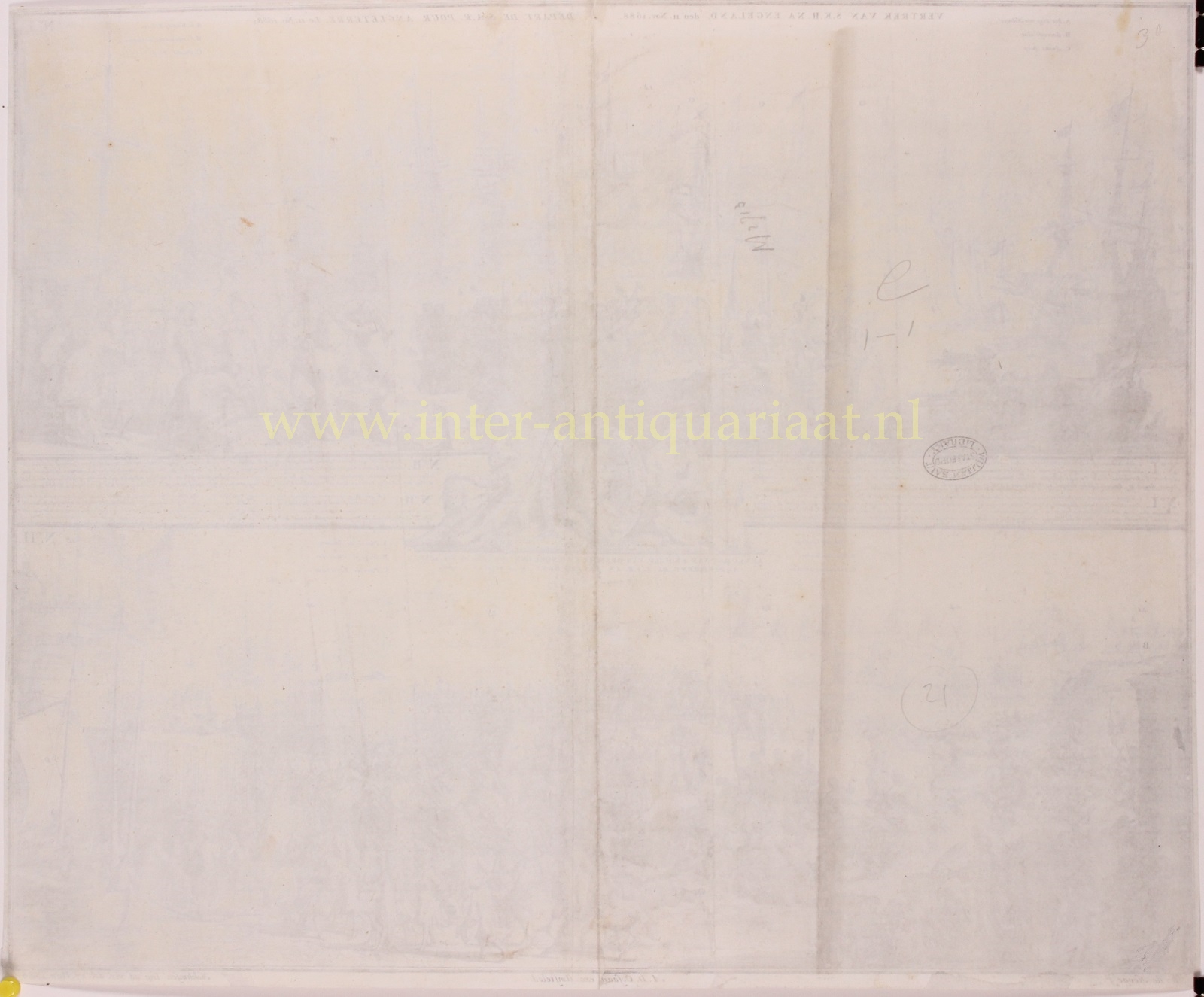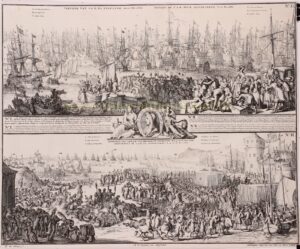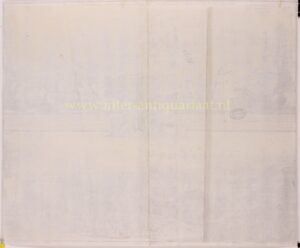WILLIAM III DEPARTS FOR ENGLAND FOR THE GLORIOUS REVOLUTION
“Vertrek van S.K.H. na Engeland; den 11. Nov. 1688.” and “Aankomst van S.K.H.D.P. van Orangie, den 15. en 16. Nov. in Engeland.” (Departure of His Royal Highness to England; November 11, 1688 and Arrival of His Royal Highness the Prince of Orange, November 15 and 16, in England.) Copper engraving made by Romeijn de Hooghe after a drawing by Hekhuizen. Published by Aart Dircksz. Oossaan in Amsterdam. Size: 43.5 x 53.5 cm.
We see a glimpse of the Glorious Revolution, the takeover by the Dutch Stadtholder William III of Orange-Nassau and his wife Mary as king and queen of England, Scotland, and Ireland in 1688–1689.
During his three-year reign, King James II of England (also William’s uncle and father-in-law) became embroiled in political battles between Catholicism and Protestantism. As a Catholic, he was alienated from both of the main parties in England.
William departed with an army of 14,000 mercenaries in Dutch service and 7,000 others (including Huguenots, and English and Scottish volunteers) from Hellevoetsluis in The Netherlands to England on November 11, 1688. William’s armada, with 53 warships and nearly 400 transport ships, was more than three times the size of the Spanish Armada a century earlier. The speed with which the entire operation was organized made a deep impression. William landed at Brixham in Devon, and it soon became clear that his army was stronger than James’s. James fled to France, and the English lords asked William to restore order.
In the top illustration, we see the departing fleet, with a pier full of people waving off the prince in the foreground. In the second illustration, we see the harbour of Brixham on the south coast of England with the castle and the prince on horseback amidst numerous troops, and the arriving fleet on the water.
Literature: Frederik Muller “Nederlandse Historieplaten”, no. 2713a
Price: SOLD





